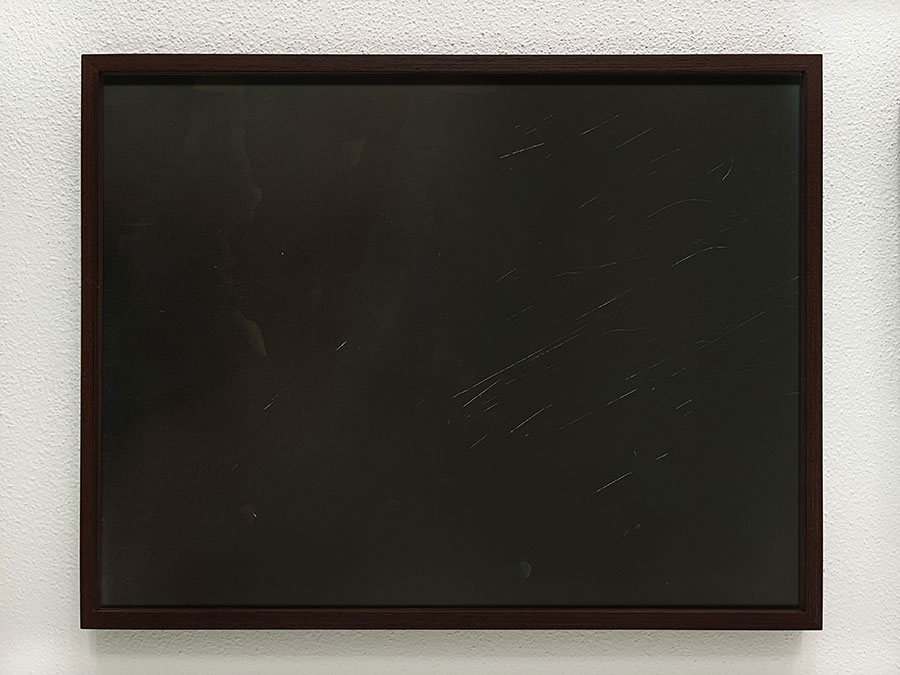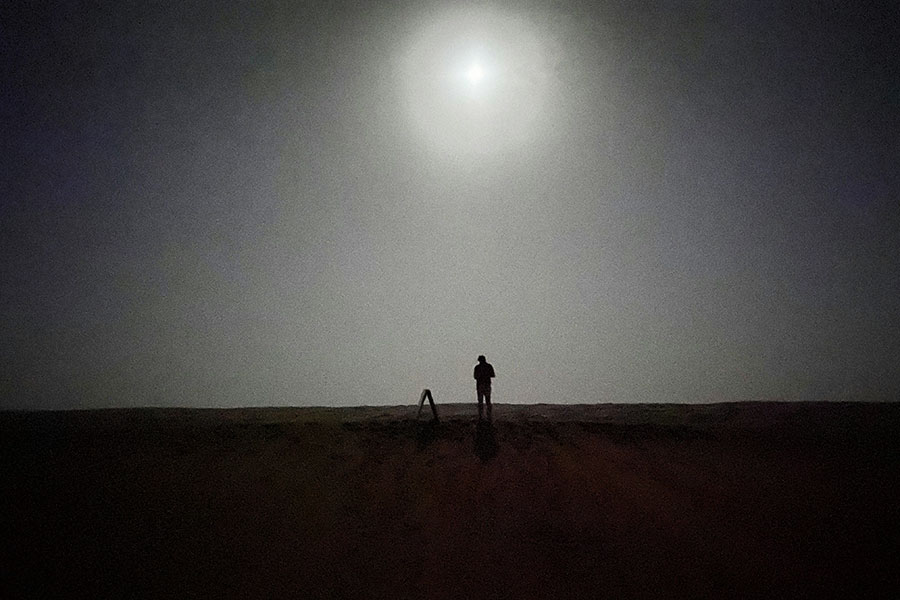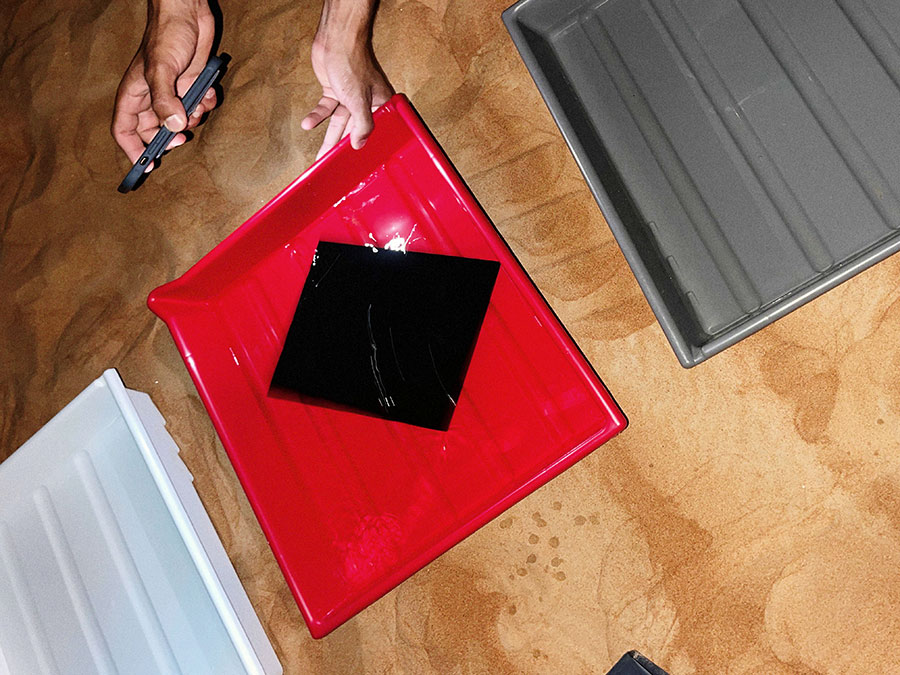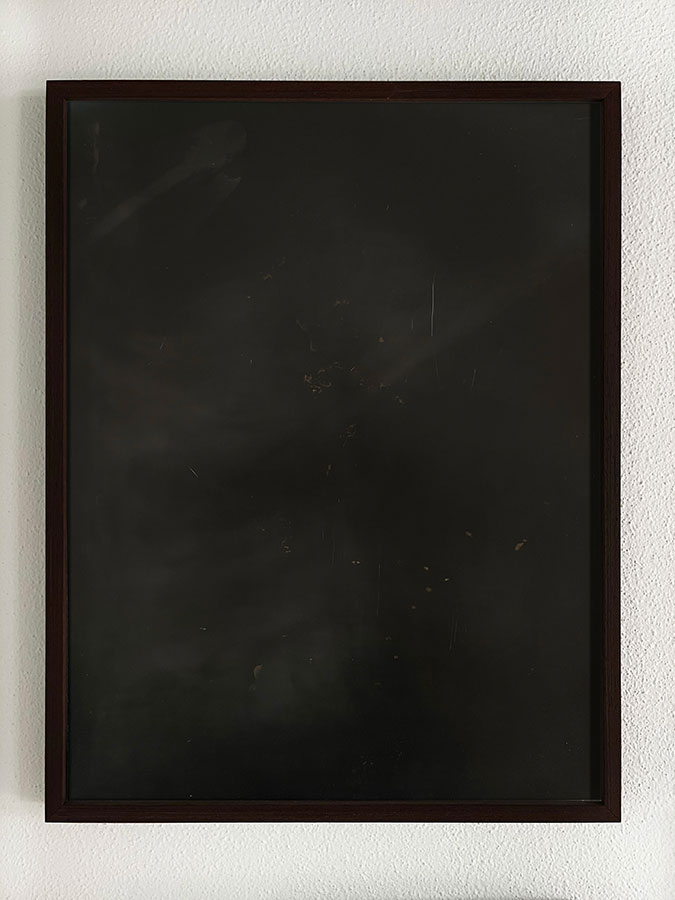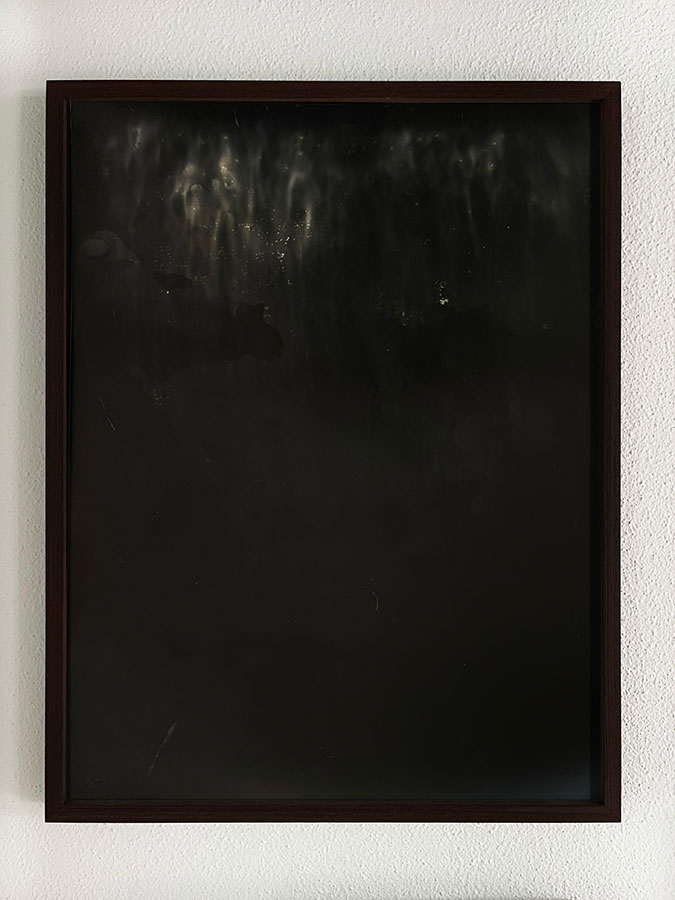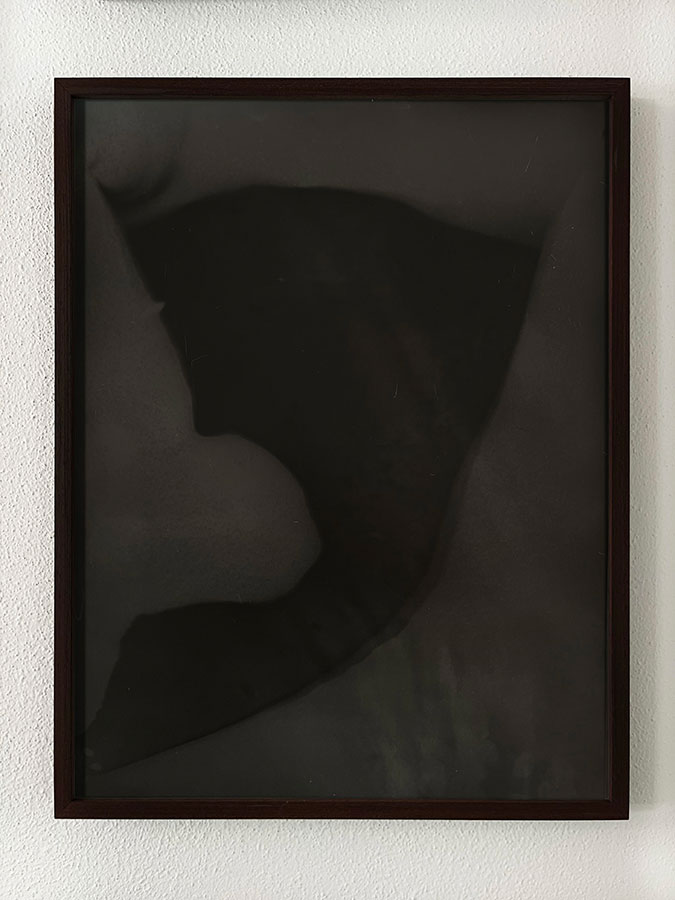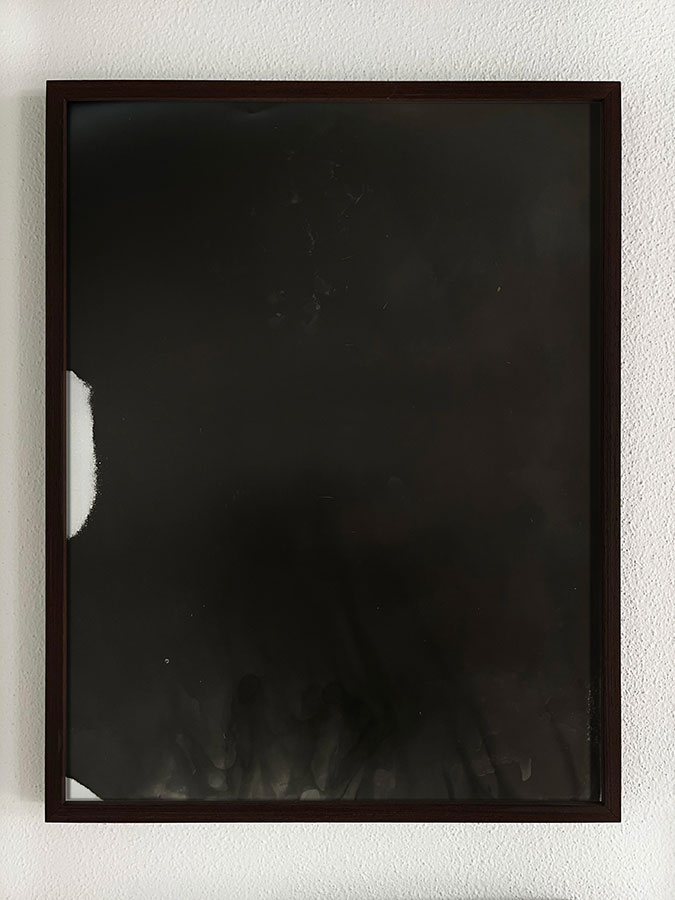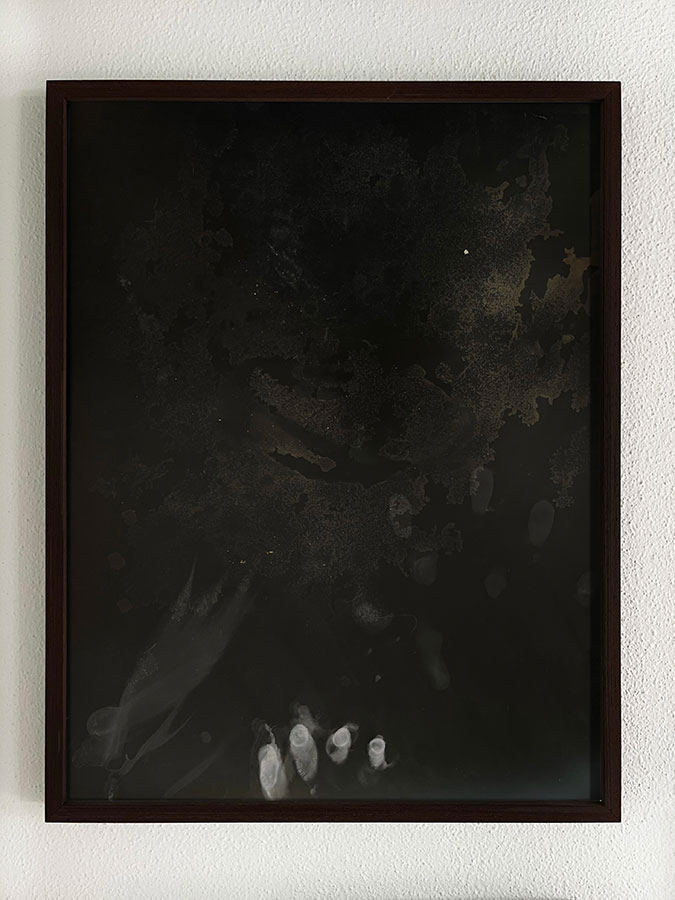Hilal
YEAR
2022
LOCATION
Oman
Towards the sky
Hilāl ( هلال ) is the Arabic word for Crescent, the word used to identify the crescent moon visible after a new moon, which also determines the beginning of a the new month in the Islamic Calendar. The crescent moon is also used by Islamic religious authorities to determine the beginning of the holy month of Ramadan.
The project is composed of a variety of photosensitive sheets, impressed directly by the sky and surrounding elements, during long exposures in between sunset and sunrise over the sands and dunes during the first 15 days of Ramadan (Hilāl moon phase) in the desert of Oman.
Regardless of exposure time what is normally framed in sky photography is a wide portion of the sky; deciding instead not to involve a camera or lenses and therefore not maximising the wideness of the focal field, every photosensitive sheet corresponds only and exactly to the portion of sky above it.
All works, ranging from 1 hour to 5 hours exposures were developed, fixed and washed on site before sunrise.
The use of photographic techniques but avoiding the use of a camera or lenses themselves allows for unpredictable results, making the process even more empirical, removing the focus from a single interpretation and instead creating an aesthetic direction pointing towards the same framework of abstraction. The uniqueness of each work is a physical fact: the absence of photographic tools together with the inclination, positioning and timing of exposure of each photosensitive sheet makes each of them correspond to the exact portion of sky above. Some of them might contain zero stars, some many, some a movement, some might be faded by car lights – an unexpected passage of a beduin family; sometimes the eye is tricked by narratives.
As in other series as ‘Silence Shapes’ and ‘Paysage’ all elements of the landscape influence the final outcome of each work in a defining way, underlining the reciprocity of influences in which men’s decisions act upon our immediate experience of the world but as well how the wider variety of factors in our physical and mental landscapes then constantly shape who we are. The movement of the stars, scratches, clouds, layerings of sand deposited by the wind, marks left by emulsion chemicals used outdoor all interact to the creation of an ideal sky in which the raising moon phase defines a path.
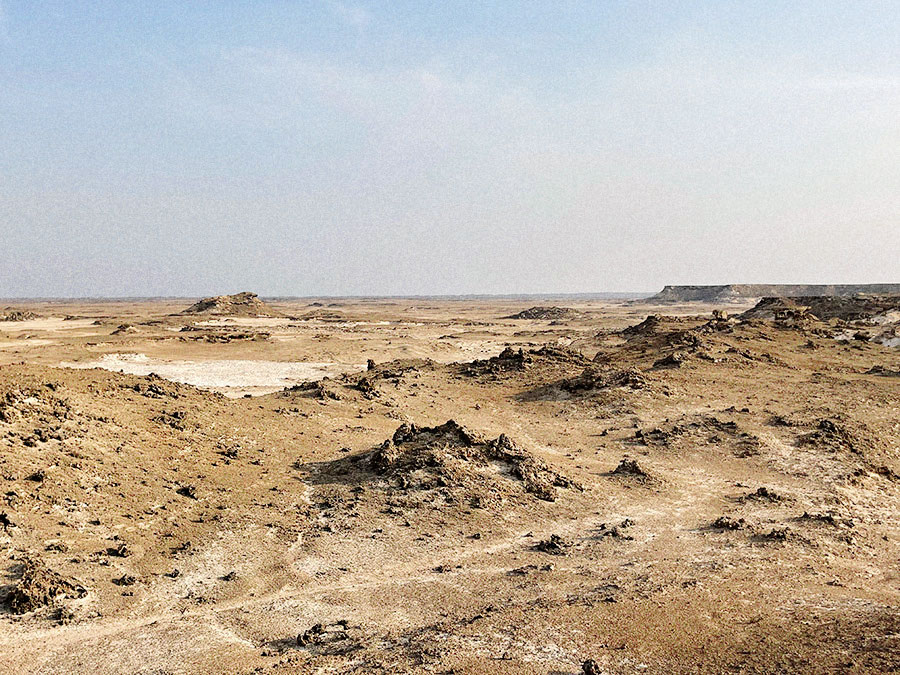
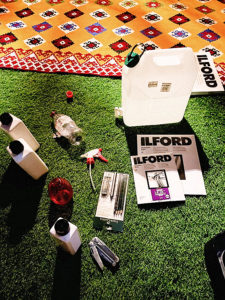
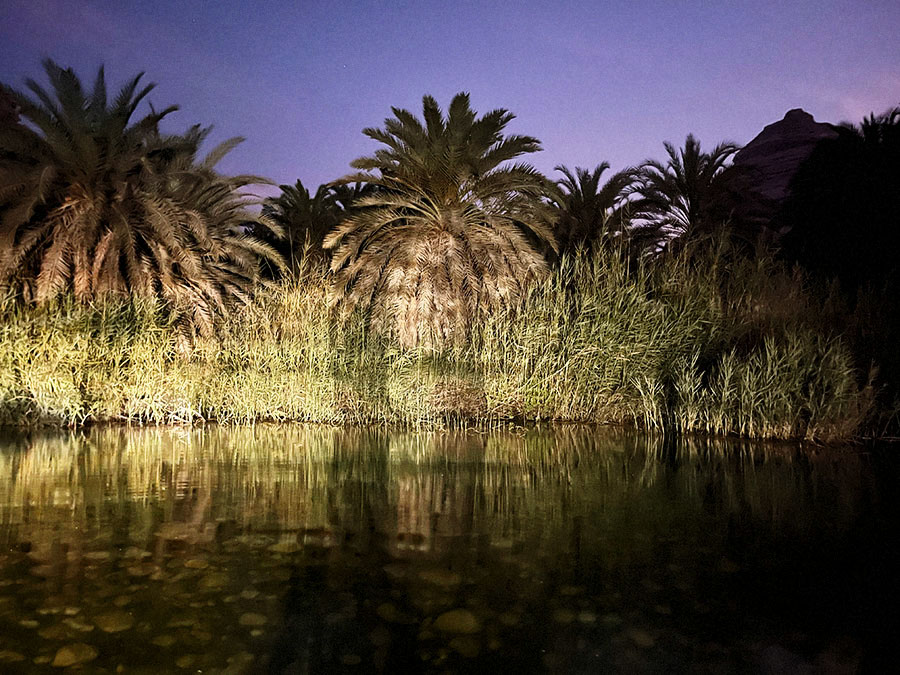
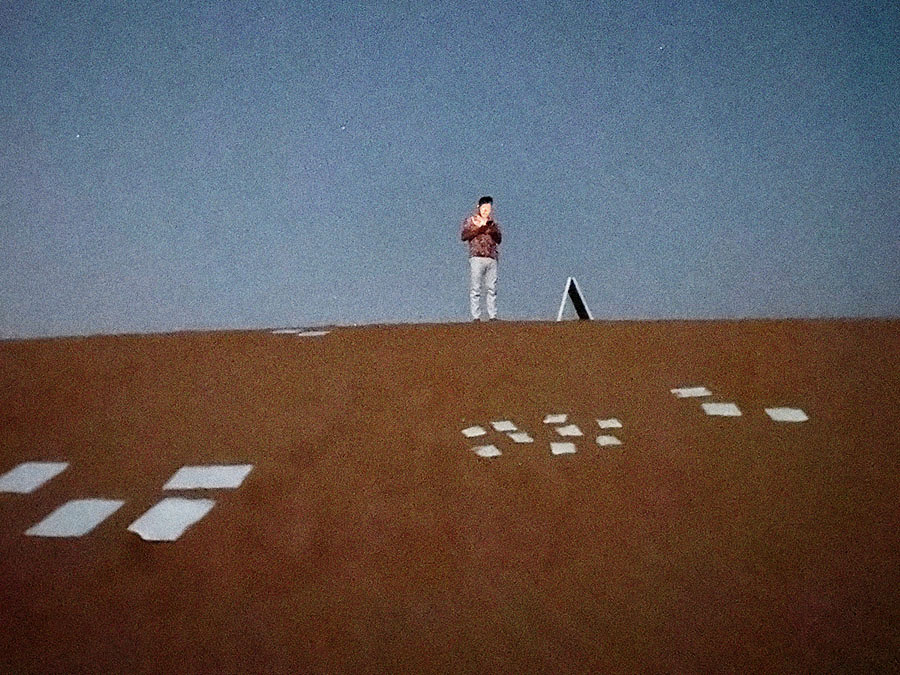
The depths of the night sometimes fade with faraway lights, sometimes copious grains of sand cover the photosensitive area for long enough to prevent the night from leaving a record of itself.
None of the traditional technical matters is relevant to this process and narrative, this isn’t photography, as all elements are used to narrate over-natural elements without iconographic means according to islamic representation rules. Even the fingerprints left on some photosensitive sheets while handling emulsion chemicals are voluntary, and even though some could technically perceive them as an error, they instead become an important metaphor of the human need to ‘reach for the sky’; a delicate, sometimes uncomfortable visual description of the human necessity to grasp higher meanings, in this case through gestuality.
After various weeks extensively exploring mountains, coastline and desert areas of Oman from Muscat to Salalah the chosen timeframe were the first 15 days of lunar phase during the month of Ramadan, for its symbolic value.

